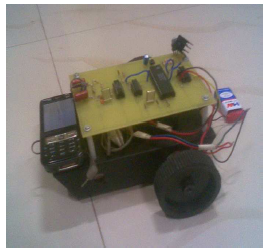





Published on Aug 21, 2023
Radio control (often abbreviated to R/C or simply RC) is the use of radio signals to remotely control a device. The term is used frequently to refer to the control of model vehicles from a hand-held radio transmitter. Industrial, military, and scientific research organizations make [traffic] use of radio-controlled vehicles as well.
A remote control vehicle is defined as any mobile device that is controlled by a means that does not restrict its motion with an origin external to the device. This is often a radio control device, cable between control and vehicle, or an infrared controller.
A remote control vehicle(Als called as RCV) differs from a robot in that the RCV is always controlled by a human and takes no positive action autonomously. One of the key technologies which underpin this field is that of remote vehicle control. It is vital that a vehicle should be capable of proceeding accurately to a target area; maneuvering within that area to fulfill its mission and returning equally accurately and safely to base.
Recently, Sony Ericsson released a remote control car that could be controlled by any Bluetooth cell phone. Radio is the most popular because it does not require the vehicle to be limited by the length of the cable or in a direct line of sight with the controller (as with the infrared set-up). Bluetooth is still too expensive and short range to be commercially viable.
The contemporary keypad is laid out in a 3×4 grid, although the original DTMF keypad had an additional column for four now-defunct menu selector keys. When used to dial a telephone number, pressing a single key will produce a pitch consisting of two simultaneous pure tone sinusoidal frequencies. The row in which the key appears determines the low frequency, and the column determines the high frequency.
For example, pressing the '1' key will result in a sound composed of both a 697 and a 1209 hertz (Hz) tone. The original keypads had levers inside, so each button activated two contacts. The multiple tones are the reason for calling the system multifrequency. These tones are then decoded by the switching center to determine which key was pressed.

The engineers had envisioned phones being used to access computers, and surveyed a number of companies to see what they would need for this role. This led to the addition of the number sign (#, sometimes called 'octothorpe' in this context) and asterisk or "star" (*) keys as well as a group of keys for menu selection: A, B, C and D. In the end, the lettered keys were dropped from most phones, and it was many years before these keys became widely used for vertical service codes such as *67 in the United States and Canada to suppress caller ID.
The U.S. military also used the letters, relabeled, in their now defunct Autovon phone system. Here they were used before dialing the phone in order to give some calls priority, cutting in over existing calls if need be. The idea was to allow important traffic to get through every time. The levels of priority available were Flash Override (A), Flash (B), Immediate (C), and Priority (D), with Flash Override being the highest priority